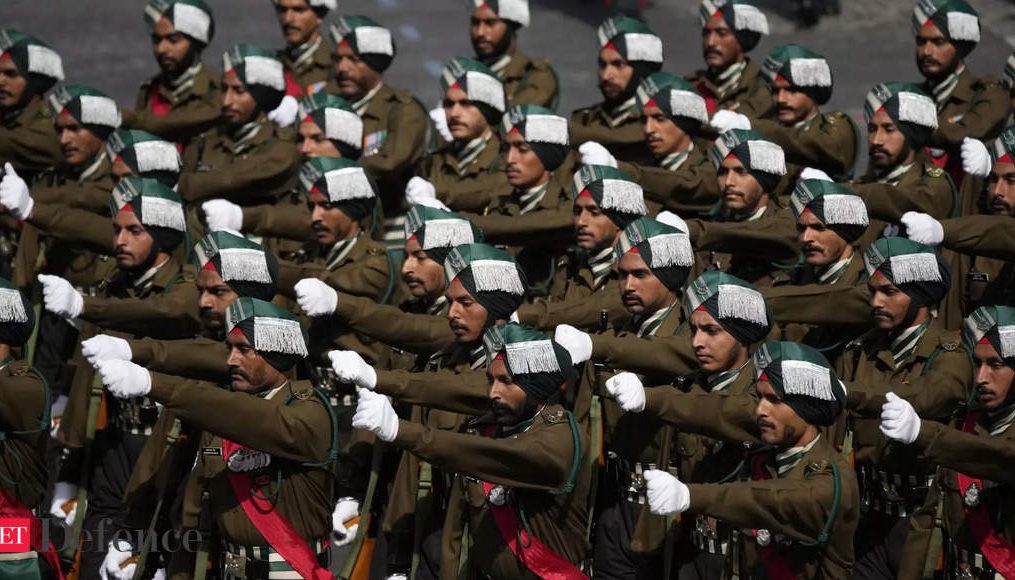Marching in Bastille Day Parade tribute to sacrifices of Indian soldiers in World War I, says Captain Aman Jagtap
“You are going to march on the land where our ancestors made the supreme sacrifice” — these were the words Capt Aman Jagtap told the rank and file of an Indian Army contingent led by him, shortly before it stepped on the magnificent Champs-Elysees in the heart of Paris to participate in the Bastille Day Parade. An Indian tri-services contingent took part in the historic military parade on July 14, with Prime Minister Narendra Modi as the guest of honour. Three Rafale fighter jets of the Indian Air Force, along with French fighter jets, joined the flypast.
Capt Jagtap, who led the Punjab Regiment contingent of the Army, said in an interaction with PTI on his return that “this was our tribute to the Indian soldiers who laid down their lives over a century ago” while fighting on that foreign soil.
Soldiers from the Punjab Regiment, one of the oldest units of the Indian Army, took part in both World War I and World War II, he said.
An old monochrome photograph taken during the World War I (1914-1918) of Indian troops marching on the streets of France and a French woman pinning a flower to the uniform of a soldier is perhaps one of the defining images of the contribution by Indians and sacrifices made during the Great War.
Capt Jagtap said this image and other photographs of Indian soldiers in France during the war “were playing at the back of our minds when we reached Paris”.
Asked what was going through his mind when he was leading the troops on the great French avenue Champs-Elysees, he said, “The josh was super high among us all”.
“Shortly before our march started, I told members of our contingent — ‘You are going to march on the land where our ancestors made the supreme sacrifice. March today as if the land is on fire’. This is what I did to motivate them to give their best, and they did,” Capt Jagtap told PTI.
The 242-member Indian contingent consisted of the Punjab Regiment, followed by a band contingent, the next being the navy contingent led by Cdr Vrat Baghel and then the IAF contingent led by Sqn Ldr Sindhu Reddy, a helicopter pilot of the Indian Air Force, an Army official said.
Army Chief General Manoj Pande on Monday felicitated members of the tri-services contingent, which participated in the Bastille Day Parade in France on July 14, and said they made the armed forces and India proud.
At an event held at the Manekshaw Centre here, the Army chief said the Indian contingent that went to France played a significant role in boosting the image of the country.
“You have not only made the three services — Army, Air Force and Navy — proud but also the nation,” he said in his address.
Gen Pande also mentioned that some members of the Punjab Regiment got to visit the war memorial at Neuve-Chapelle, a World War I memorial in France built in memory of the Indian soldiers who laid down their lives, and paid their respects there.
The Army chief in November last year had visited the memorial and laid a wreath at the solemn site.
“The feeling was actually out of this world. It was also an emotional moment for many of our members, as the first names of many contingent members were same as the ones found on many (memorial) stones there. Our regiment’s insignia was also etched on a stone. And, we took a special photograph there too,” Capt Jagtap said, when asked about the experience of visiting the Indian memorial in France.
He said villagers living near the memorial came to “meet us when we visited”, and some women even “pinned a flower to our uniform”, which was very touching.
“The Indian Memorial at Neuve-Chapelle commemorates over 4,700 Indian soldiers and labourers who lost their lives on the Western Front during the First World War and have no known graves. The location of the memorial was specially chosen as it was at Neuve Chapelle in March 1915 that the Indian Corps fought its first major action as a single unit,” according to the website of the Commonwealth War Graves Commission.
The memorial was designed by architect Sir Herbert Baker, who had also designed various government buildings during the creation of the new imperial capital of the British Raj — ‘New Delhi’.
The Punjab Regiment Contingent was declared the best marching contingent in the Republic Day Parade in New Delhi this year. Capt Jagtap had led the contingent on that occasion too.
Gen Pande handed over the winning trophy after felicitating members of the contingent.
Sqn Ldr Reddy, who had led the IAF contingent at the 74th Republic Day celebrations here in the January 26 parade on the Kartavya Path (earlier Rajpath), said, “We put in all our ‘josh’ and energy and gave our best in the Bastille Day Parade too”.
The contingent leaders said marching in front of two top world leaders — Prime Minister Modi and French President Emmanuel Macron — in a historic city like Paris was itself a humbling experience.
